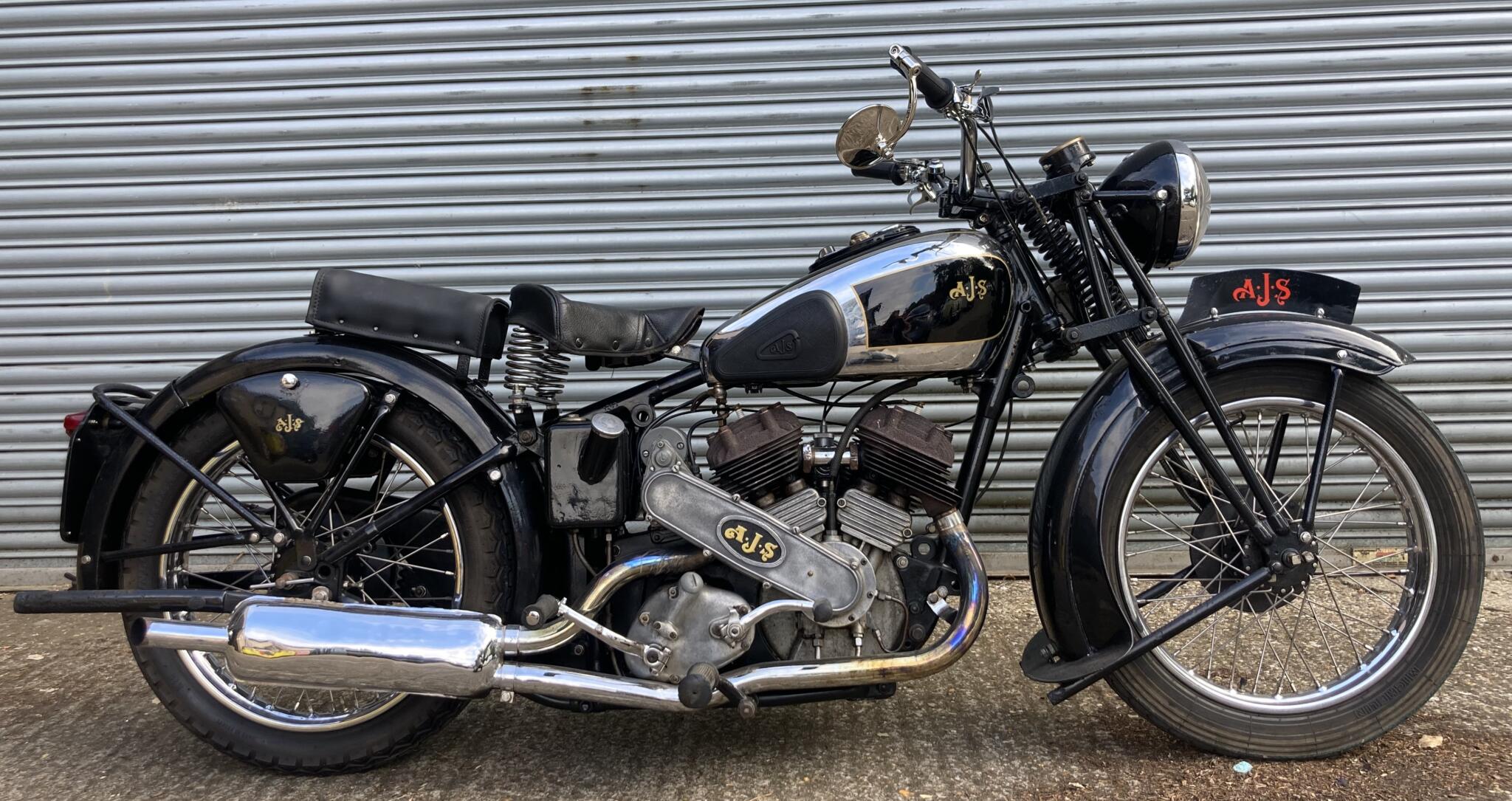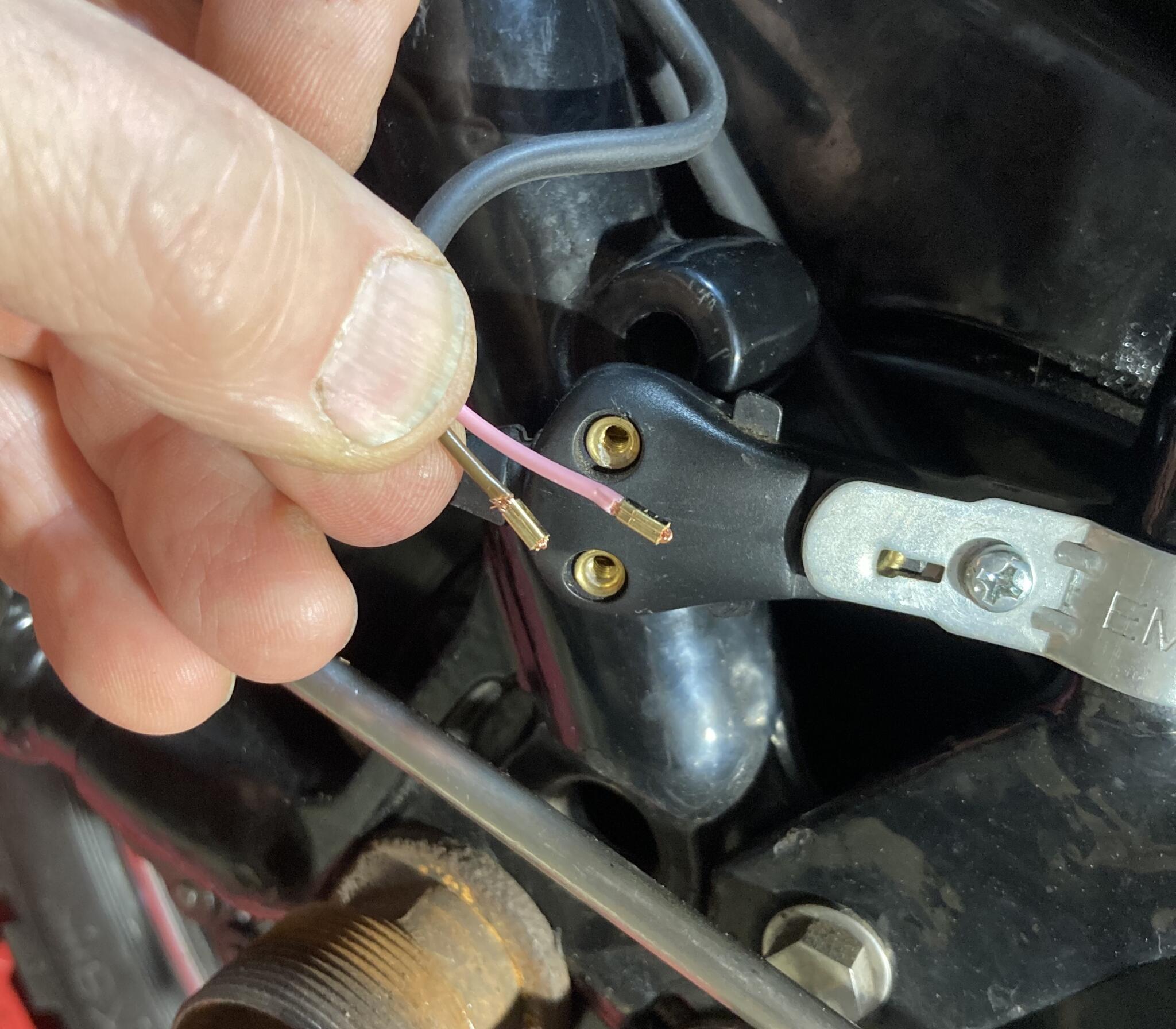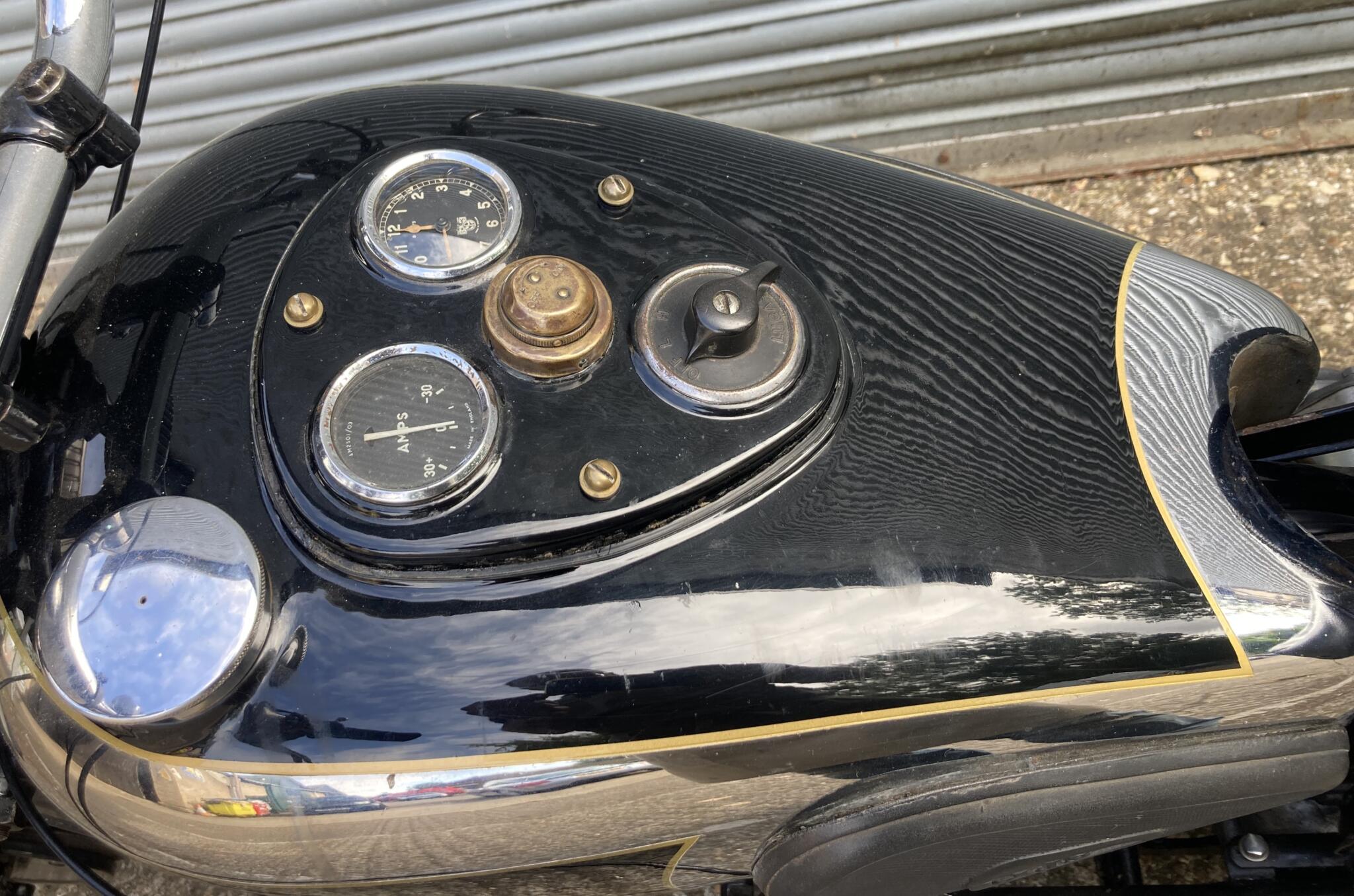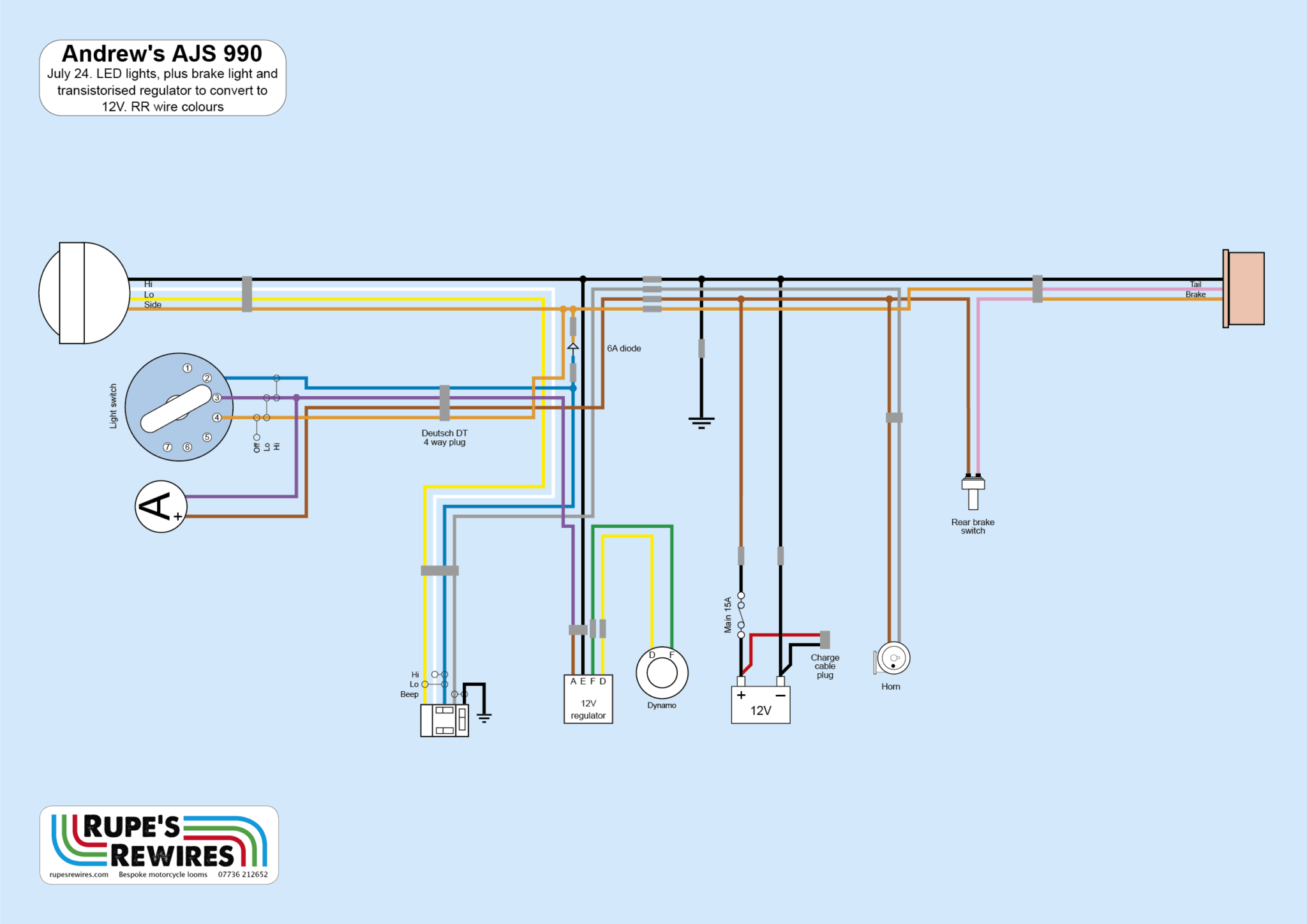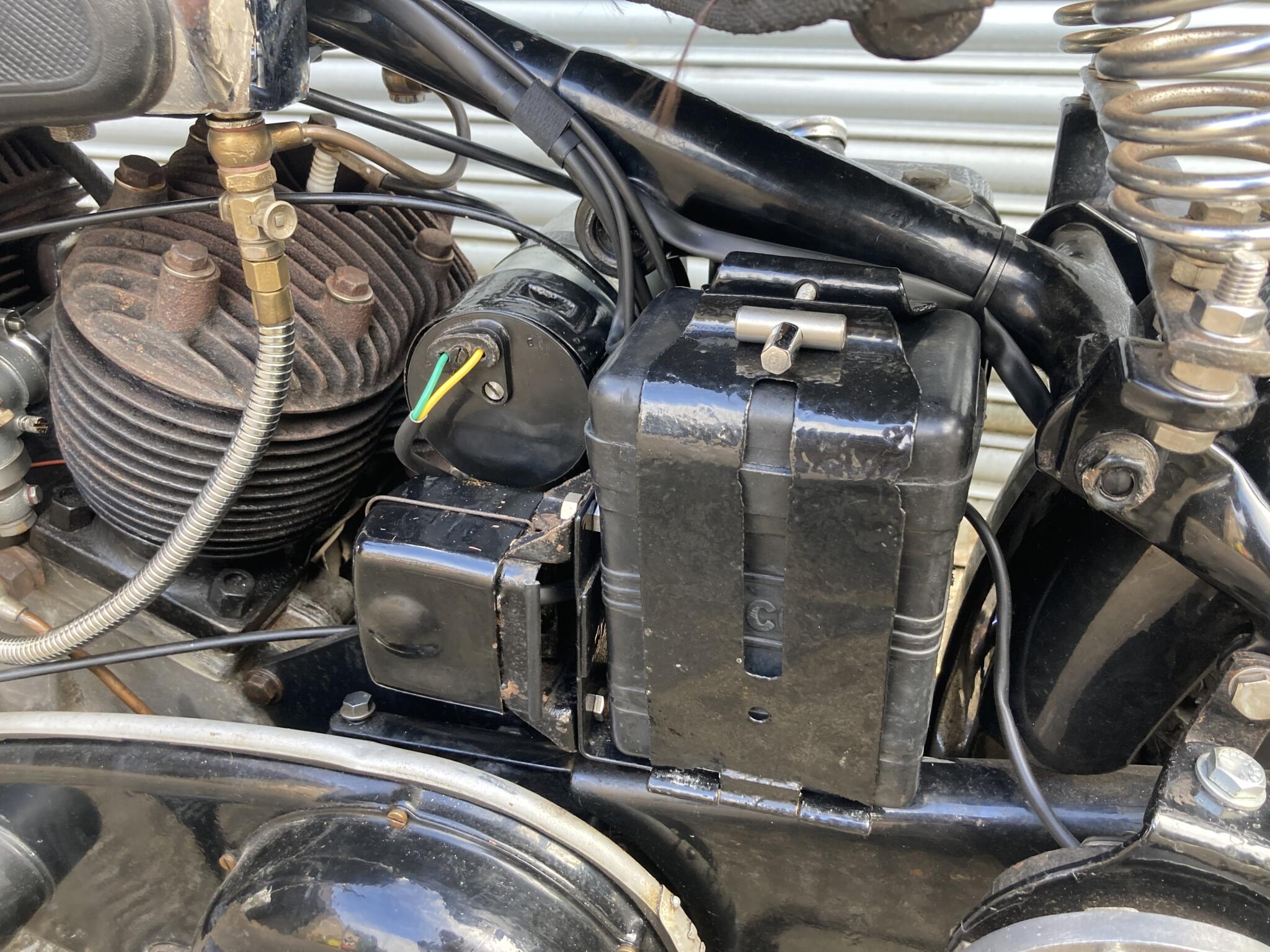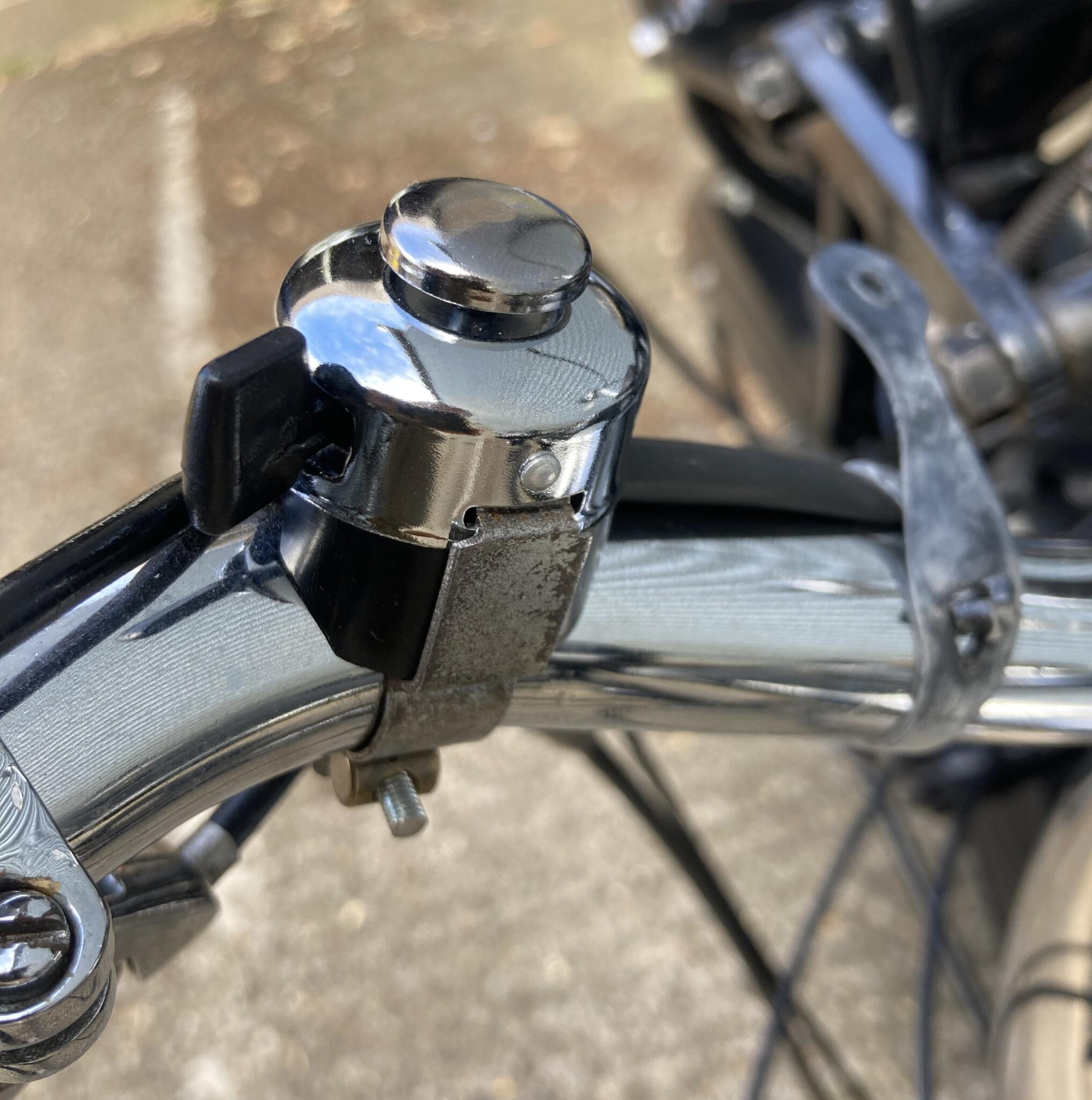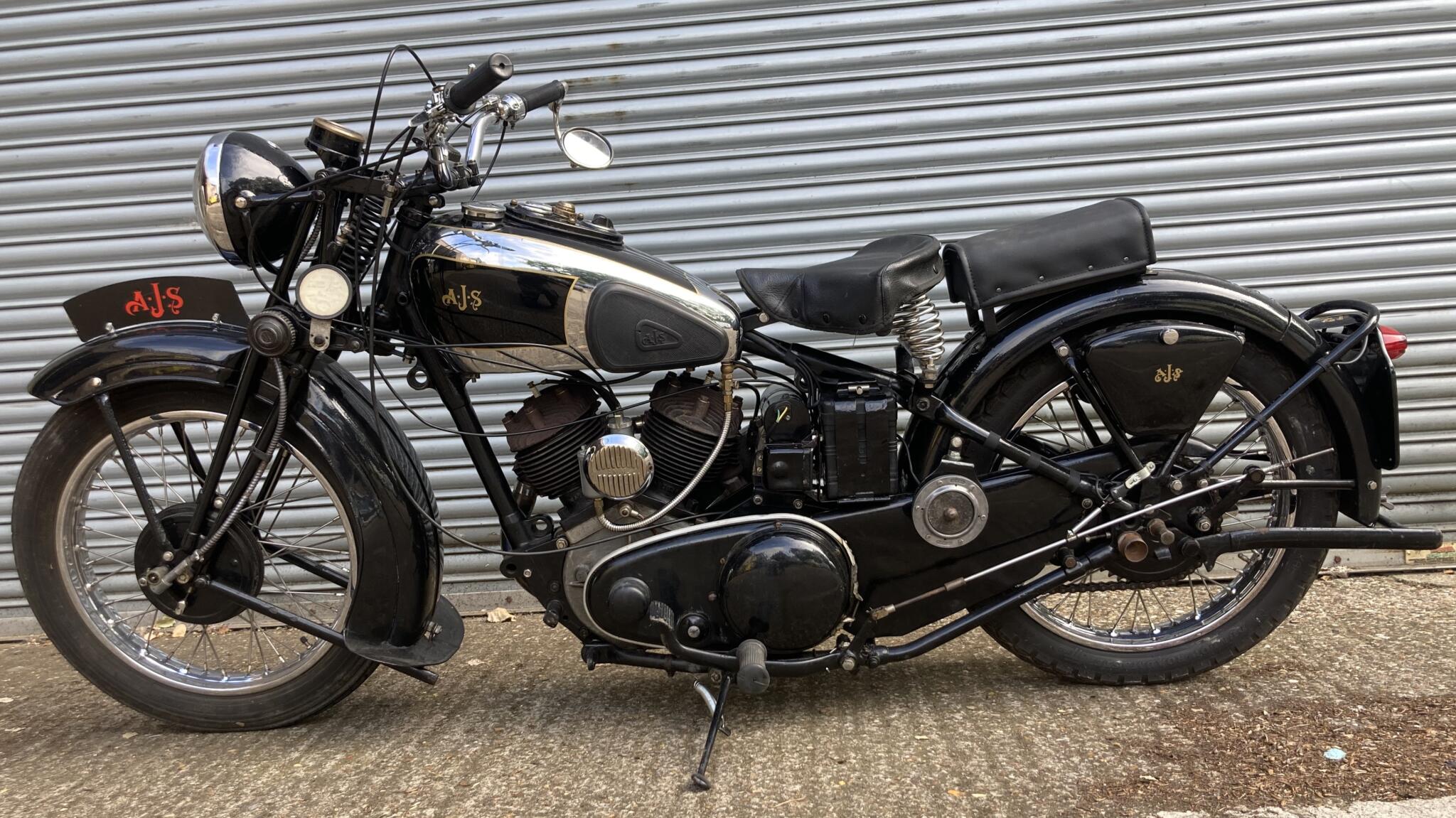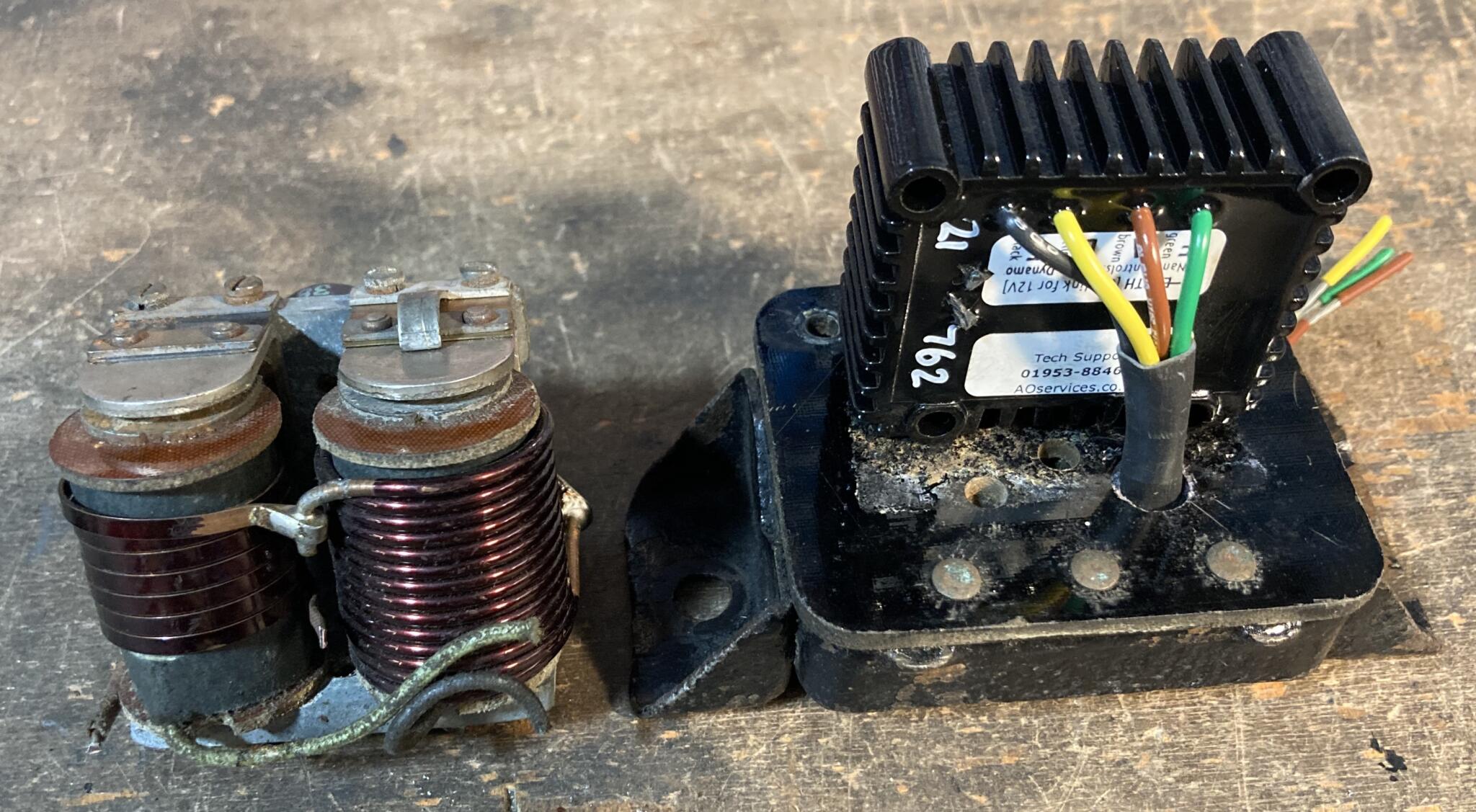
Left: the original mechanical voltage regulator. Right: the transistorised one that fits inside the old regulator box
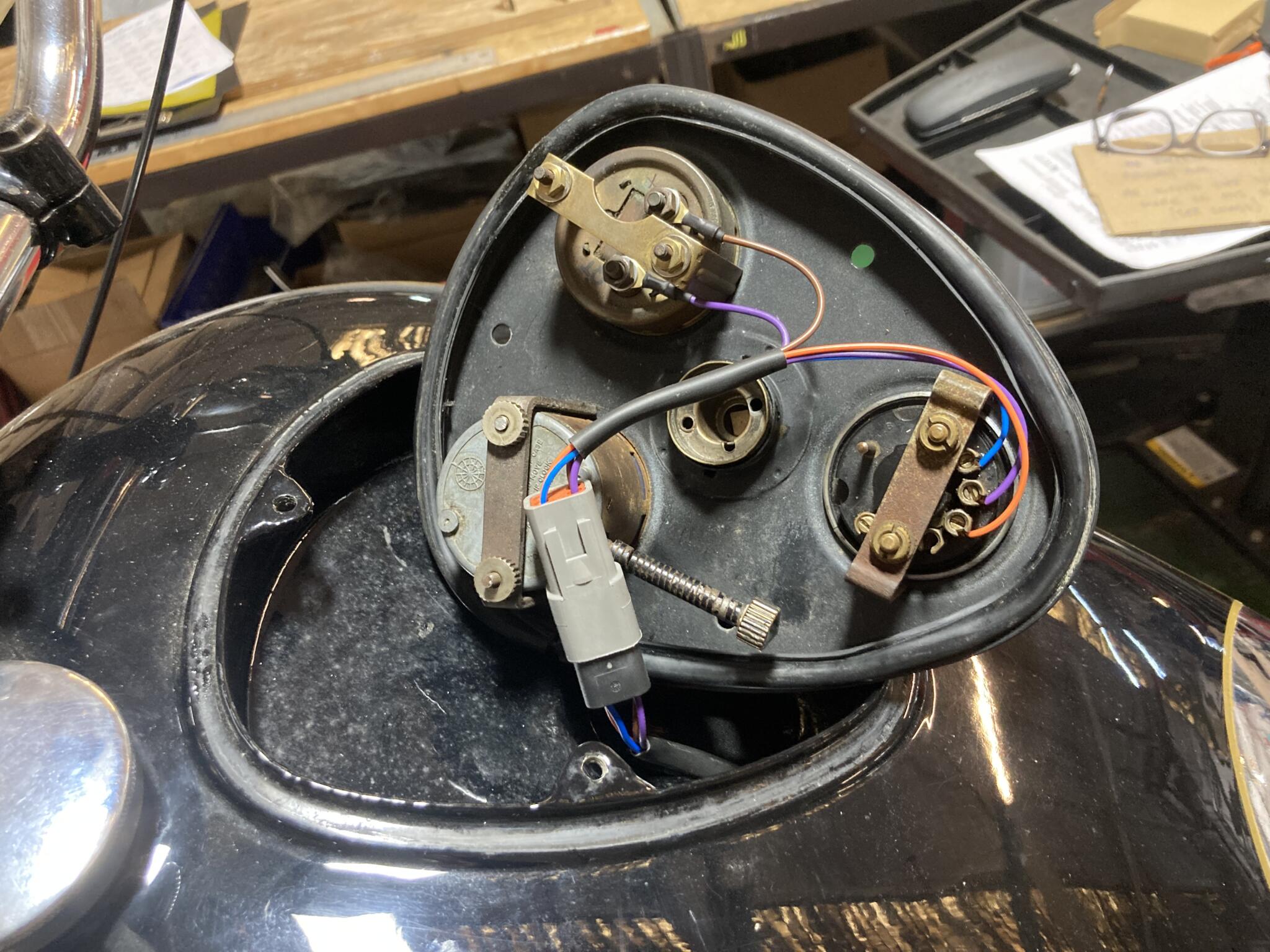
The instrument panel in the tank is begging for a quickly detachable plug, to make tank removal even vaguely possible without swear words. I used a Deutsch DT
Andrew’s 1939 AJS Model 2
Andrew had acquired this remarkable device fairly recently, and was still debugging it when he brought it along to the shop.
The carb is not original, and the wiring was the usual confection of misery which tends to bedevil historic vehicles. At first he just wanted it renewing, but after a discussion he went for the full 12 volt thing. It’s an easy decision on a 6 volt bike, because 12 volts are always better. All you do is replace the battery, regulator and bulbs.
If there’s any doubt, you also need to flash the dynamo to tell it the polarity you want. In this case, negative earth. Which means touching a live battery lead to the F terminal of the dynamo. It takes about three seconds.
Bikes like this are extremely simple electrically, but pretty difficult from a layout point of view. The problem is manufacturers back then never gave the electrics a thought, and the original bike didn’t have a brake light, so figuring out the brake light switch wiring (for example) takes some doing. There are so many ways to make it look terrible. If you can find a way to make it look simply OK, you’re doing well.
We used the AJS as a guinea pig for the new super-stable fuel being sold by The Splined Hub (the Jaguar restoration shop where I rent a corner). Unlike modern E5 or E10, the Sustain fuel will not rot your carbs or fuel tank. On this occasion it also started the 990cc V-twin first kick.
We gave the bike LED bulbs throughout, from Goffy Electrical. It’s expensive, but the extra brightness is amazing. LEDs also reduce the need for an ancient dynamo to pump out enough beans to power conventional bulbs.
This is possibly the oldest bike to grace the RR workshop. Everybody loved the look and sound of it.
